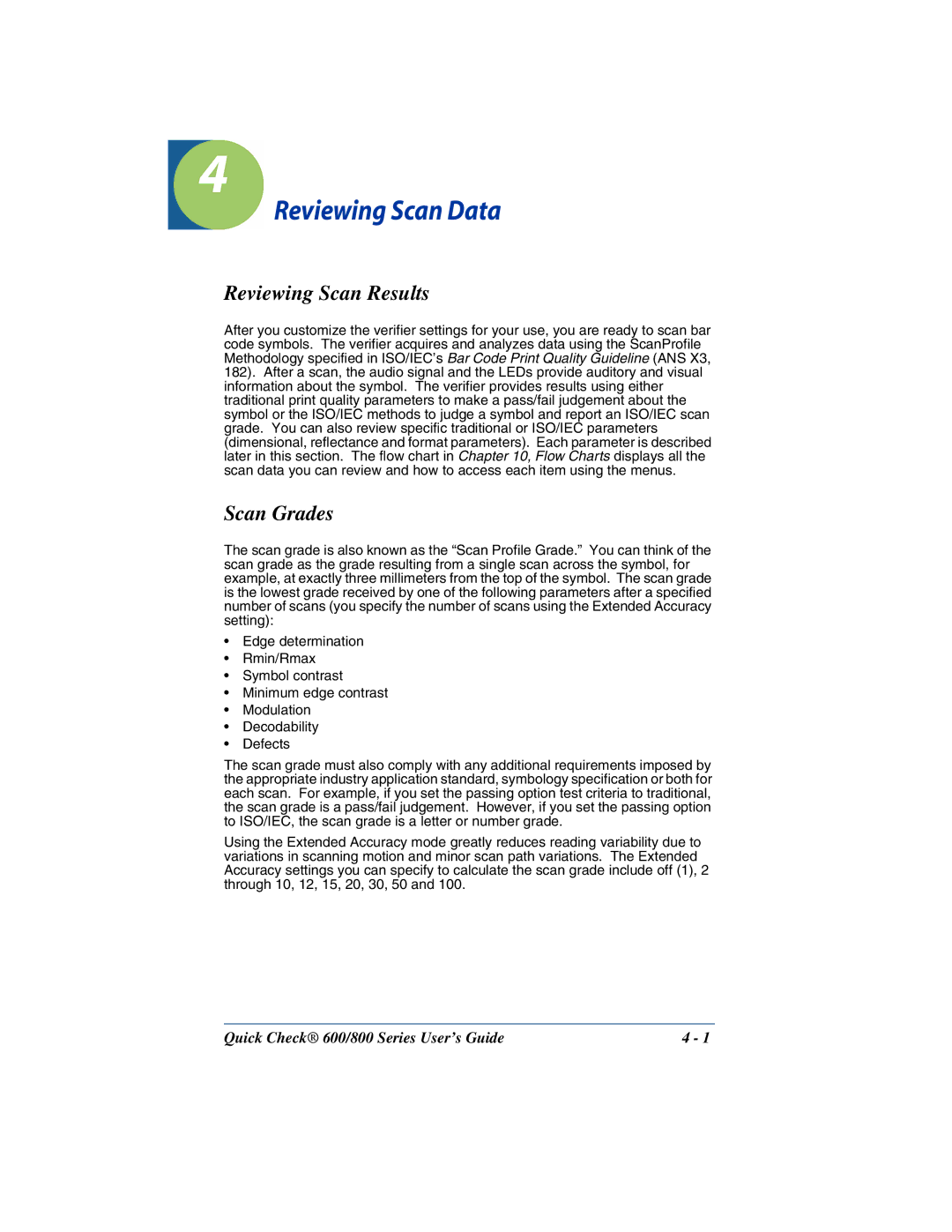
4
Reviewing Scan Data
Reviewing Scan Results
After you customize the verifier settings for your use, you are ready to scan bar code symbols. The verifier acquires and analyzes data using the ScanProfile Methodology specified in ISO/IEC’s Bar Code Print Quality Guideline (ANS X3, 182). After a scan, the audio signal and the LEDs provide auditory and visual information about the symbol. The verifier provides results using either traditional print quality parameters to make a pass/fail judgement about the symbol or the ISO/IEC methods to judge a symbol and report an ISO/IEC scan grade. You can also review specific traditional or ISO/IEC parameters (dimensional, reflectance and format parameters). Each parameter is described later in this section. The flow chart in Chapter 10, Flow Charts displays all the scan data you can review and how to access each item using the menus.
Scan Grades
The scan grade is also known as the “Scan Profile Grade.” You can think of the scan grade as the grade resulting from a single scan across the symbol, for example, at exactly three millimeters from the top of the symbol. The scan grade is the lowest grade received by one of the following parameters after a specified number of scans (you specify the number of scans using the Extended Accuracy setting):
•Edge determination
•Rmin/Rmax
•Symbol contrast
•Minimum edge contrast
•Modulation
•Decodability
•Defects
The scan grade must also comply with any additional requirements imposed by the appropriate industry application standard, symbology specification or both for each scan. For example, if you set the passing option test criteria to traditional, the scan grade is a pass/fail judgement. However, if you set the passing option to ISO/IEC, the scan grade is a letter or number grade.
Using the Extended Accuracy mode greatly reduces reading variability due to variations in scanning motion and minor scan path variations. The Extended Accuracy settings you can specify to calculate the scan grade include off (1), 2 through 10, 12, 15, 20, 30, 50 and 100.
Quick Check® 600/800 Series User’s Guide | 4 - 1 |
